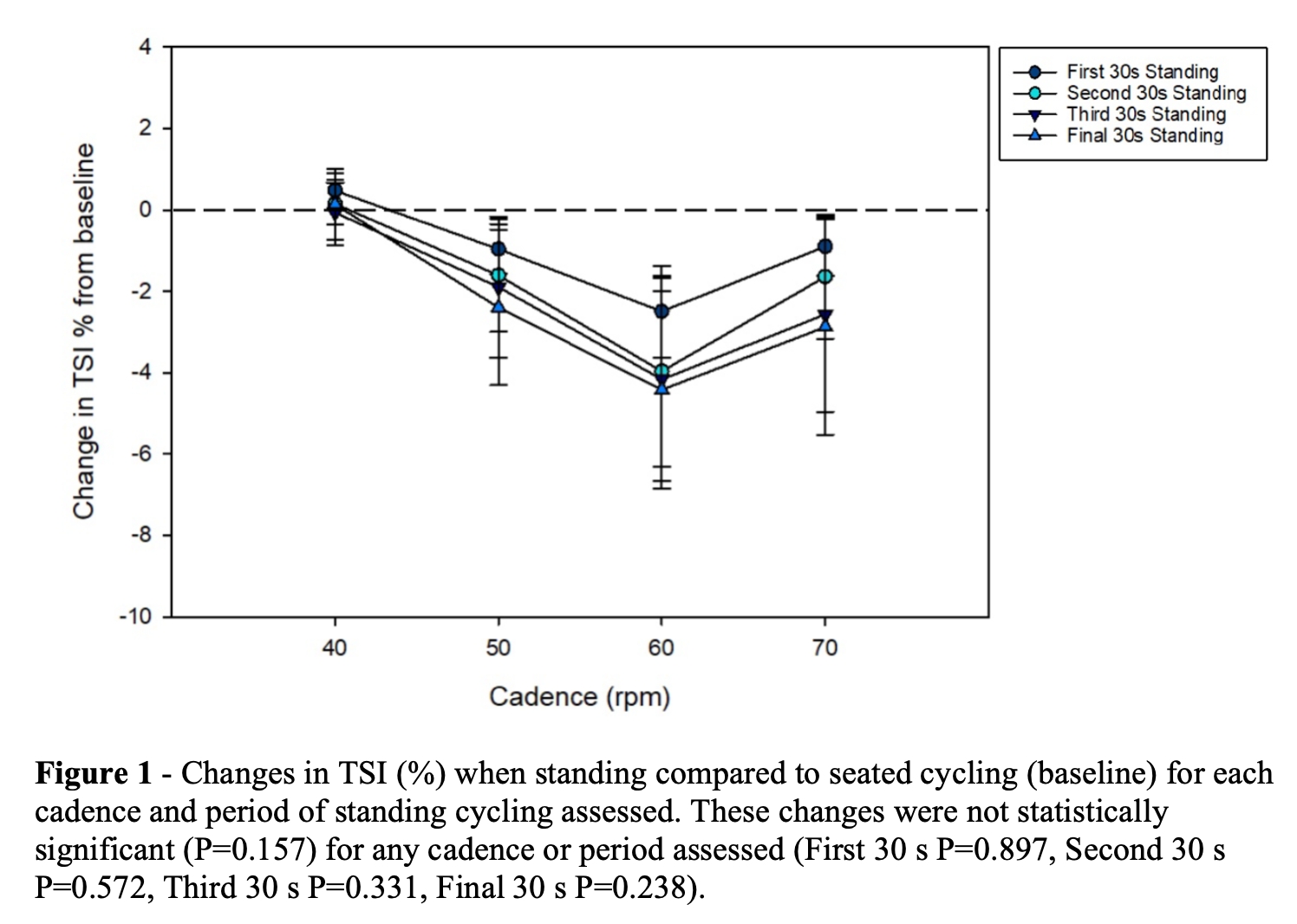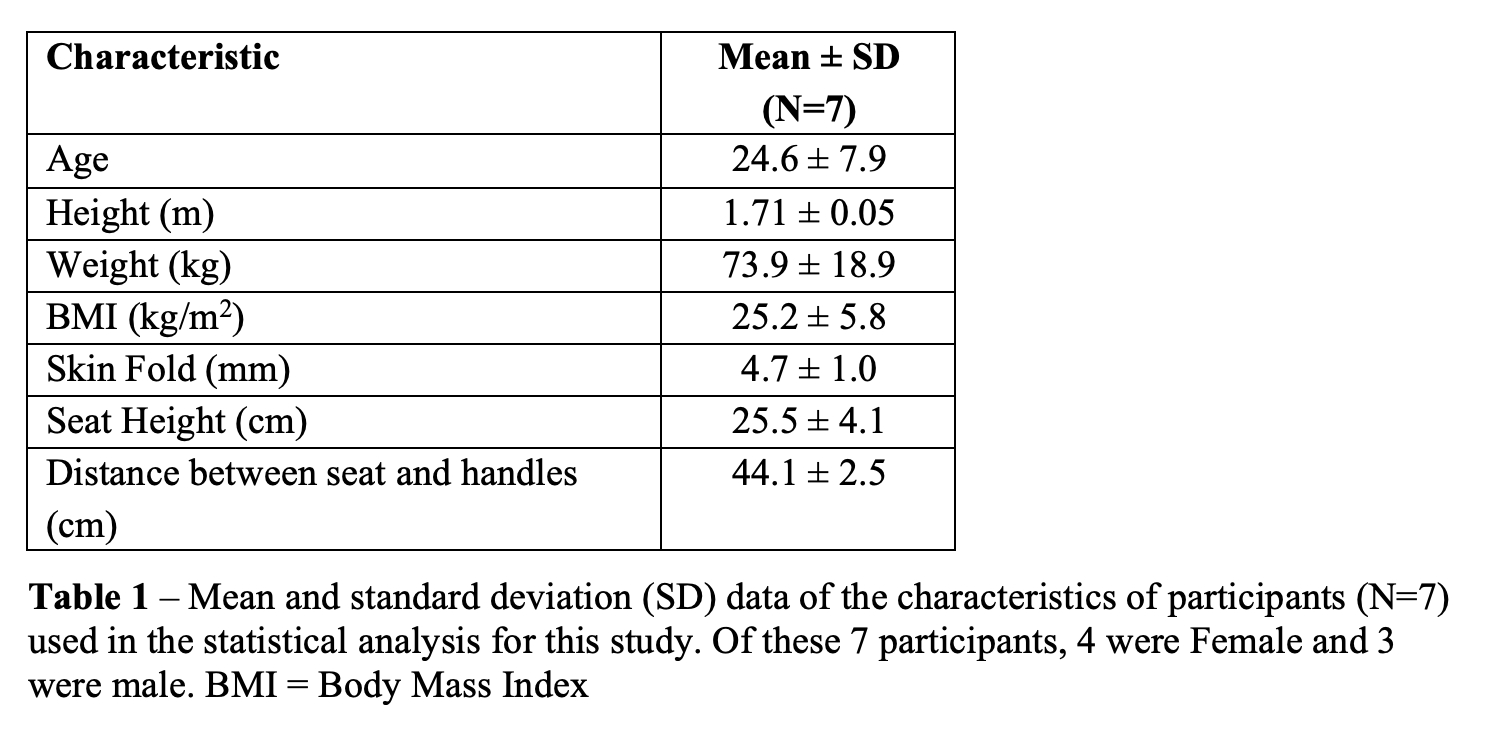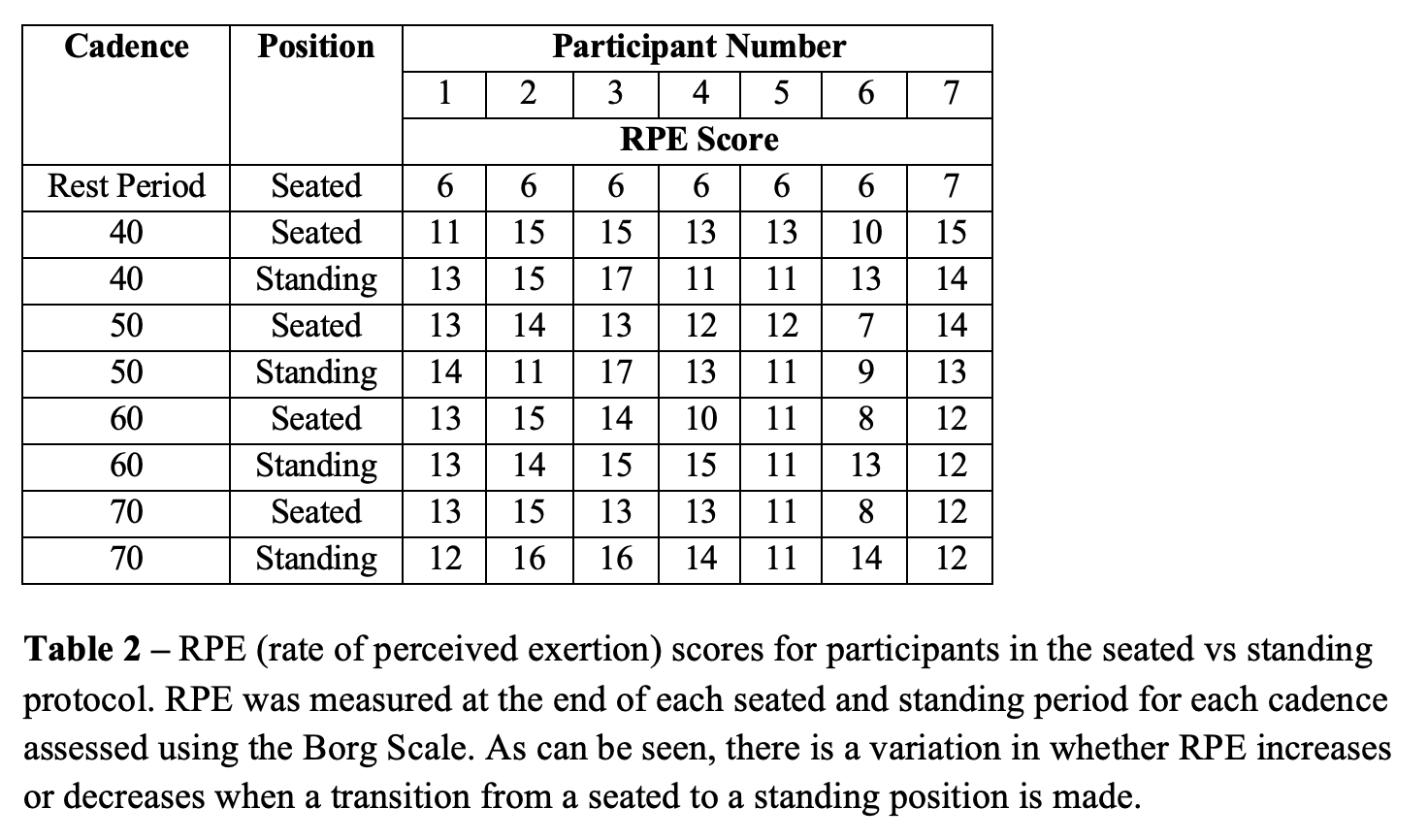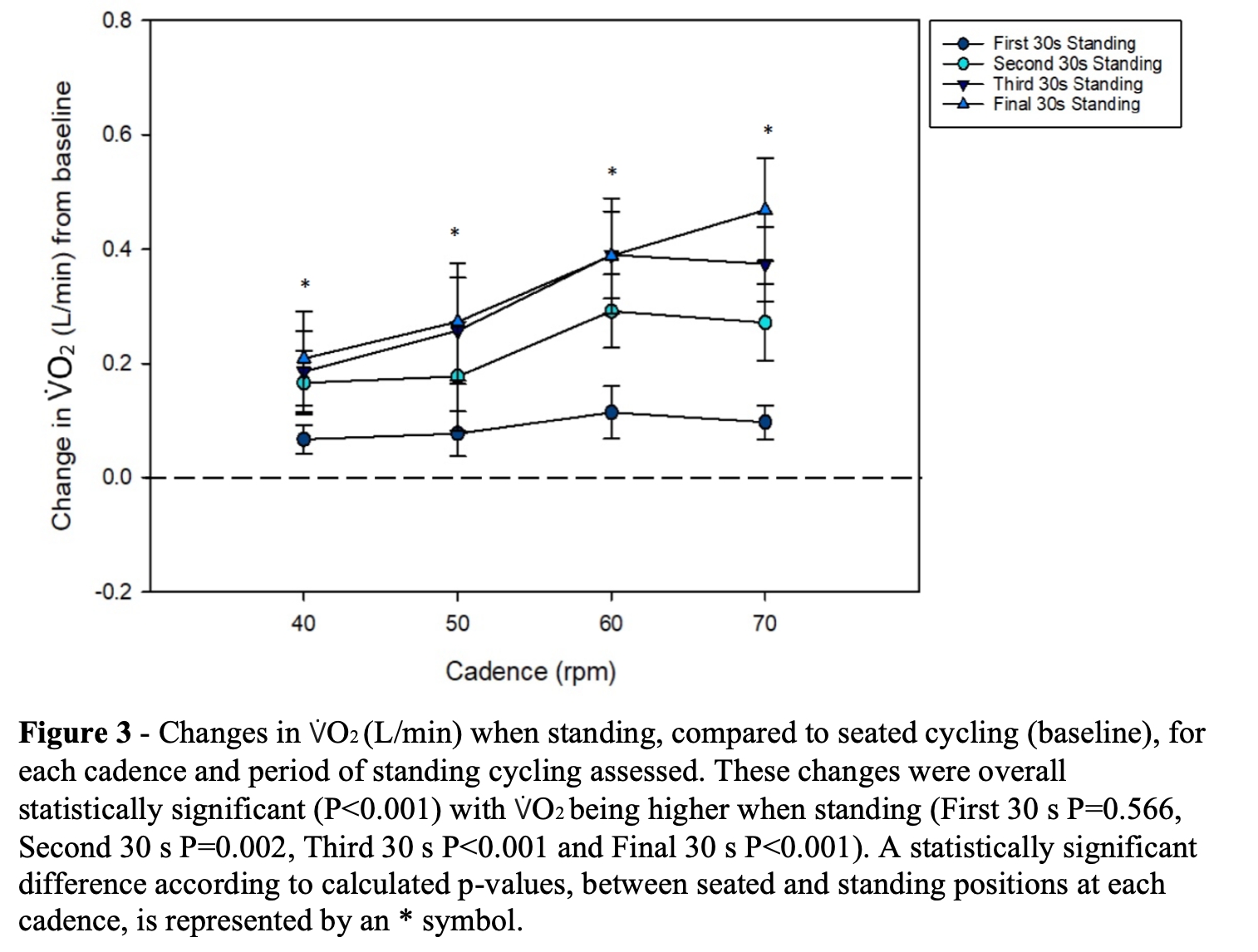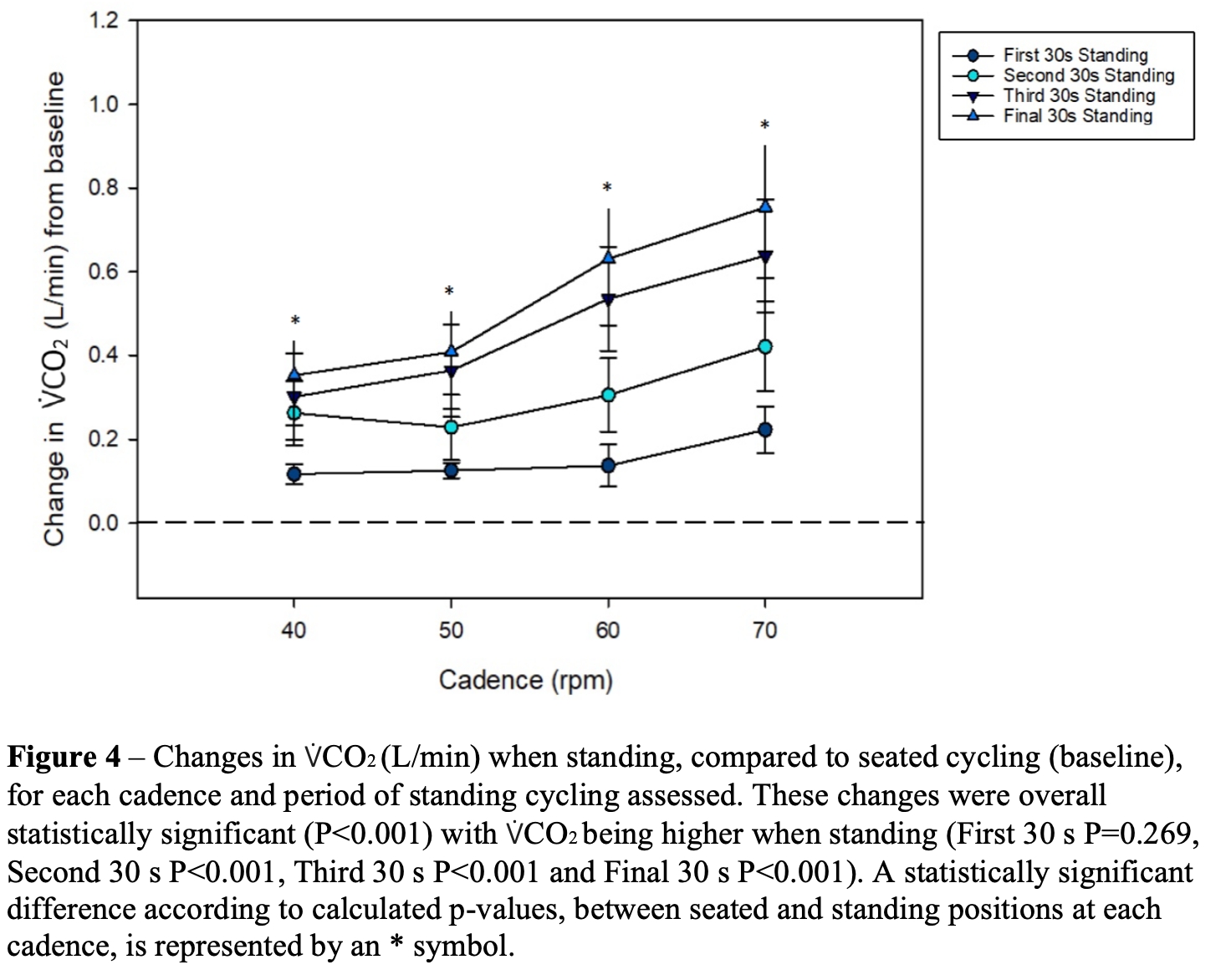When cycling uphill, a standing position results in a lower RPE (rating of perceived exertion) compared to a seated position (Hansen and Waldeland 2008). For example, Tanaka et al 1996 found a significantly (P<0.05) lower RPE when cycling in a standing position for a 10% grade. This reduction in RPE could be due to increased oxygenation of the skeletal muscles of the leg when in a standing position. NIRS (near infrared spectroscopy) can be used to calculate the TSI (tissue saturation index), and thereby assess skeletal muscle oxygenation (Belardinelli et al 1995). The aim of this study was to investigate the effect of standing when cycling on vastus lateralis muscle TSI at different cadences. It was hypothesised that standing when cycling would result in a higher TSI value and therefore greater skeletal muscle oxygenation than seated cycling. An incremental ramp test was used to determine the ventilatory threshold (VT) of 7 healthy participants (3 male, 4 female, age (years) 24.6 ± 7.9, height (m) 1.71 ± 0.05, weight (kg) 73.9 ± 18.9 (Table 1)). The participants then cycled for 5 minutes (3 minutes seated then 2 minutes standing) on an ergometer at cadences of 40, 50, 60, and 70 rpm (revolutions per minute), in a randomised order, at a work rate matching 75% VT. The participants had a 3 minute warm-up and a 2 minute active recovery period in-between each 75% VT exercise period. Vastus lateralis muscle TSI, heart rate, respiratory parameters and RPE were measured. TSI (%) when standing was not significantly different (P= 0.157) from seated cycling baseline TSI values at 40, 50, 60 or 70 rpm (Figure 1), with a mean change of -1.8%. Heart rate (Figure 2), V̇O2 (Figure 3) and V̇CO2 (Figure 4) had mean changes of + 12 bpm, + 0.21 L/min and + 0.36 L/min respectively and were significantly (P< 0.001) greater when participants were cycling in a standing position. There was no significant difference in RPE score (Table 2) between positions (P= 0.242). The oxygenation of the vastus lateralis muscle is not significantly different, at a 75% VT work rate, between a seated or a standing cycling position. This concurs with other studies (Harnish et al 2007, Ryschon and Stray-Gunderson 1991). A benefit of standing may depend on the work rate and gradient cycled at, cyclist muscle composition and training level. Future studies should consider using ultrasound, electromyography and muscle biopsies to determine this.
Future Physiology 2020 (Virutal) (2020) Proc Physiol Soc 46, PC0031
Poster Communications: The effect of standing when cycling on skeletal muscle oxygenation
Marianne Beach1
1 King's College London, London, United Kingdom
View other abstracts by:
Where applicable, experiments conform with Society ethical requirements.

